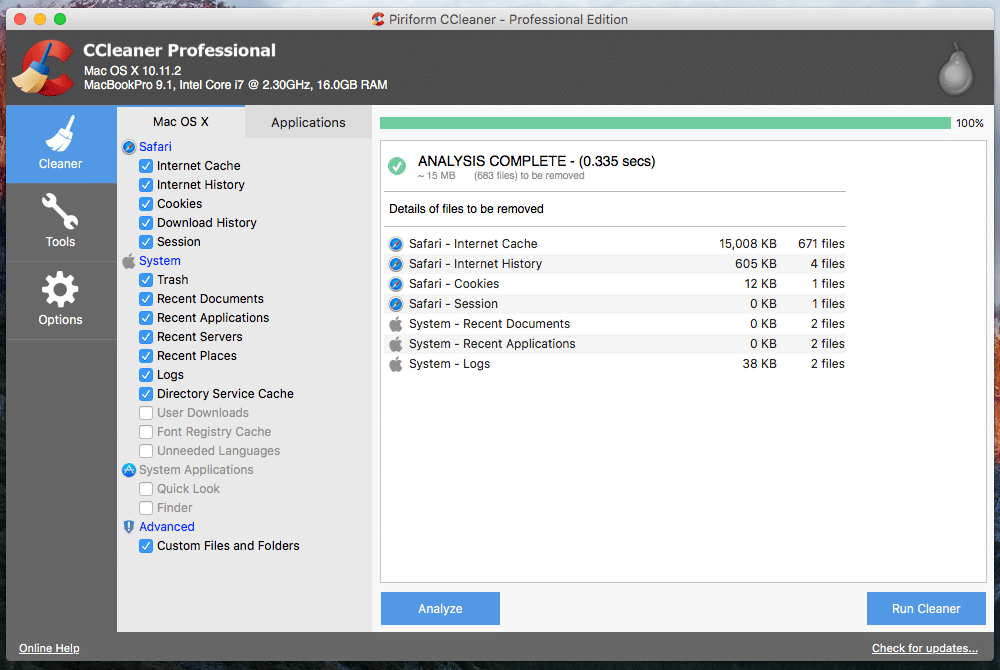

- #Free lic.mac cleaner software serial
- #Free lic.mac cleaner software portable
- #Free lic.mac cleaner software Pc
- #Free lic.mac cleaner software windows
#Free lic.mac cleaner software Pc
The original IBM PC (Model 5150) motivated the production of clones during the early 1980s. More recent computers, including M1 Macs and Chromebooks are turning to ARM-based, especially 64-bit ARM64 CPUs.
#Free lic.mac cleaner software windows
Only the Macintosh had kept significant market share without having compatibility with the IBM PC, although that changed with Intel Macs running OS X, often dual-booting Windows with Boot Camp.
#Free lic.mac cleaner software serial
Newer 64-bit computers can no longer run MS-DOS and enough hardware differences that 16-bit DOS software cannot not be used examples include slight differences in the memory map, serial ports or hardware. Interoperability with the bus structure and peripherals of the original PC architecture may be limited or non-existent. Soon after the industry adopted new bus standards in a similar, cooperative way the VESA Local Bus (VLB), Peripheral Component Interconnect (PCI) and the Accelerated Graphics Port (AGP).ĭescendants of the x86 IBM PC compatibles, namely 64-bit computers based on " x86-64/AMD64" chips comprise the majority of desktop computers on the market as of 2021, with the dominant operating system being Microsoft Windows. It was later re-named the Industry Standard Architecture (ISA) bus, after the Extended Industry Standard Architecture bus open standard for IBM PC compatibles was announced in September 1988 by a consortium of PC clone vendors, led by Compaq and called the Gang of Nine, as an alternative to IBM's proprietary Micro Channel architecture (MCA) introduced in its PS/2 series.

Some early IBM PC compatibles used the same 8-bit computer bus as the original PC and XT models, but many soon adopted the 16-bit IBM AT bus.
#Free lic.mac cleaner software portable
Soon after in 1982, Compaq released the very successful Compaq Portable in 1982, also with a clean-room reverse-engineered BIOS, and also not challenged legally by IBM. Other rival companies, Corona Data Systems, Eagle Computer, and the Handwell Corporation were threatened with legal action by IBM, who settled with them. Columbia Data Products built the first clone of the IBM personal computer, the MPC 1600 by a clean room reverse-engineered implementation of its BIOS.

This was facilitated by IBM's choice of commodity hardware components, which were cheap, and by various manufacturers' ability to reverse engineer the BIOS firmware using a " clean room design" technique. These "clones" duplicated almost all the significant features of the original IBM PC architectures. Later, the term was primarily used in contrast to Apple's Macintosh computers. The term was initially in contrast to the variety of home computer systems available in the early 1980s, such as the Apple II, TRS-80, and Commodore 64. The designation "PC", as used in much of personal computer history has not meant "personal computer" generally, but rather an x86 computer capable of running the same software that a contemporary IBM PC could. The term "IBM PC compatible" is now a historical description only, since IBM no longer sells personal computers. Such computers were referred to as PC clones, or IBM clones. IBM PC compatible computers are similar to the original IBM PC, XT, and AT that are able to use the same software and expansion cards. The Compaq Portable was one of the first nearly 100% IBM-compatible PCs.


 0 kommentar(er)
0 kommentar(er)
